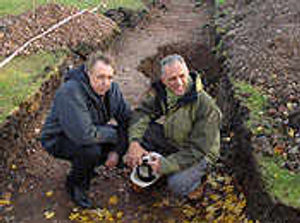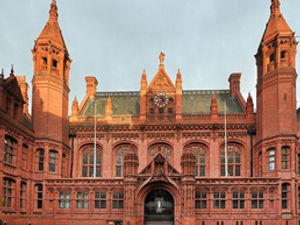Digging deep to pin down Iron Age fort
An expert from English Heritage has been to visit the site of what could be the remains of an Iron Age hill fort in Wednesbury.

An expert from English Heritage has been to visit the site of what could be the remains of an Iron Age hill fort in Wednesbury.
The official from the organisation which protects and promotes sites of interest came out to view land in St Mary's Road yesterday afternoon.
If as suspected, two ditches, discovered on an archeological dig, do date back to the Anglo-Saxon or even the Iron Age era, the site would be of national importance.
For the past two weeks, a team from the Ironbridge Gorge Museum Trust have been carrying out investigations in St Mary's Road.
They were called in because there are plans to turn the site into a housing development for the elderly by the Black Country Housing Group and St Mary's Church, which is opposite.
As they were coming to the end of their work they found what they hope is evidence of how Wednesbury got its name.
It has long been believed there may have been a fort in the town, in part because of its name, Wednesbury, which has links to the word fort, but nothing to back that up has yet been found.
Two ditches have been discovered – a large defensive ditch with a smaller one running alongside it – which may date to the early Anglo-Saxon era, from the fifth century AD through to the Norman Conquest in 1066.
Pottery has also been found at the site.
Borough archaeologist Graham Eyre-Morgan said: "We think the ditch itself is early Anglo-Saxon or Iron Age. It is an incredibly important site.
"This could be of national importance and is pushing Wednesbury back into the depths of history.
"But we need to do more digging to know what we are dealing with," he added.
"I have involved English Heritage and asked them to have a look at it as this could be a site of national importance, be it an Iron Age hill fort or something dating from the Anglo-Saxon era."
English Heritage exists to protect and promote England's historic environment and ensure that its past is researched and understood. The land is opposite St Mary's Church and Black Country Housing Group, in partnership with the church, want to develop it for 35 apartments for frail and elderly people, as well as a small number of units for people with learning disabilities.
The scheme will also include a replacement for the existing church hall.





